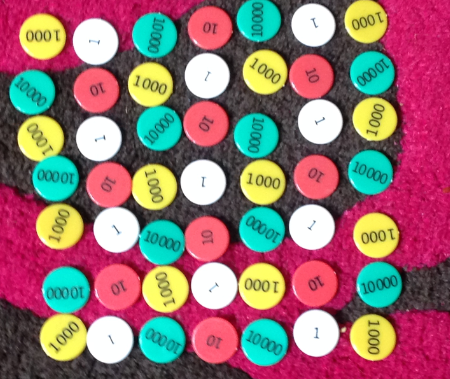
I’m a teacher who has lots of experience teaching primary age children. Teaching at home should be easy, right? No, it most certainly isn’t!
There is a distinct lack of enthusiasm from my nine-year-old, who is under the impression that he’s on holiday. With the constant interruptions, dive-bombing of online meetings and sloping off to play on various devices, it’s hard work.
Ofsted would probably rate my ‘home school’ as requires improvement; but we are all coping with restricted living conditions, whilst trying to work, entertain, educate and not go completely bonkers.
Parents: what you need to know
We are not teachers, we are parents whose children are also worried about the current situation. Children have lost the structure to their day, their friends and are trying to adapt to this as well.
With this in mind, we have put together some simple STEM starter activities that children can do that are fun and involve little input from parents. I thought that I’d have a go and share the things that worked over the past few days.
Day 1: coding without computers
My son was keen to make lunch, so I asked him to write down how to make a sandwich step-by-step. Then robot-like, he went and made one.
The key here is to ask them to do it exactly as they wrote it down. You can even do the robot voice and actions. If something goes wrong, for example they forget to write an instruction, e.g. put the knife in butter, or have the order incorrect, then they need to go back to the instructions and change them.
The instructions they are writing are a simple algorithm for programming a computer (themselves) to perform. If anything goes wrong in the process, then they’ve found a bug in the programme and need to debug or change the instructions, so that the programme can run as you want it to.
 Top tip: this idea can also be used when following instructions to do just about anything.
Top tip: this idea can also be used when following instructions to do just about anything.
Day 2: science
My son’s school set an investigation to look at what happens to an egg when placed in vinegar. We set it up using an old jam jar and malt vinegar. We discussed what might happen to the egg over a couple of days and decided when to check on it and write down any changes.

After a few minutes there were bubbles on the egg and then lots more bubbles on the surface of the liquid. We talked about what the bubbles might be and where they had come from, thinking about how the acidic vinegar had reacted with the eggshell, which is made from calcium carbonate.
After a day we took it out to find that the egg had no shell anymore and it felt quite solid. We left it for another two days and took it out again. It felt quite firm and, following the bouncing egg guide, we dropped it from about 15 cm and the egg bounced. This led us to talk about how this had happened, where the shell had gone and if we could get the original egg back or not.
 Top tip: clear vinegar is better, but we didn’t have that in the house and I wasn’t about to sacrifice my balsamic to science, so we used malt vinegar instead.
Top tip: clear vinegar is better, but we didn’t have that in the house and I wasn’t about to sacrifice my balsamic to science, so we used malt vinegar instead.
Day 3: maths
I set a few simple multiplications, which went down quite well and then I sourced a puzzle from NRICH Maths linked to this topic. If you have coloured counters or bits of paper it makes it easier for children, if not then pencil and paper works well too.
My son then worked on the different ways in which sweets could be arranged in a box, so no colours were next to each other. Here are the results so far…

 Top tip: these open-ended puzzles are a great way to develop problem-solving and reasoning skills and many can be copied straight onto paper, which is what I did as I don’t own a printer.
Top tip: these open-ended puzzles are a great way to develop problem-solving and reasoning skills and many can be copied straight onto paper, which is what I did as I don’t own a printer.
Day 4: geography
After a PE session with the amazing Joe Wicks, I was then inspired by opening my fridge and I decided that today we would find out about where our food came from.
I made a simple table with three headers; ‘food’, ‘where it comes from’ and ‘miles travelled’. I then set him off on a task to find at least ten different types of food, read the labels and list where they had come from.
He was really keen to draw a world map to see this, not having a world map to hand we pulled out an old jigsaw showing different continents. It took a while to do the jigsaw, but tomorrow we will be finding out which food in our house has travelled the furthest and shortest distance to get to us. This activity works well if you limit it to fruit and veg, but that was running low in our house, so we went all out!
The results are in
These activities didn’t go perfectly and they did not replace in any way, shape or form the learning that would have been achieved at school. However, they are activities that parents can do with children of various ages using things that are available to them at home.
I will attempt to do one or two activities a week, that way I will feel that I am keeping my son’s learning going, whilst also doing my day job.
